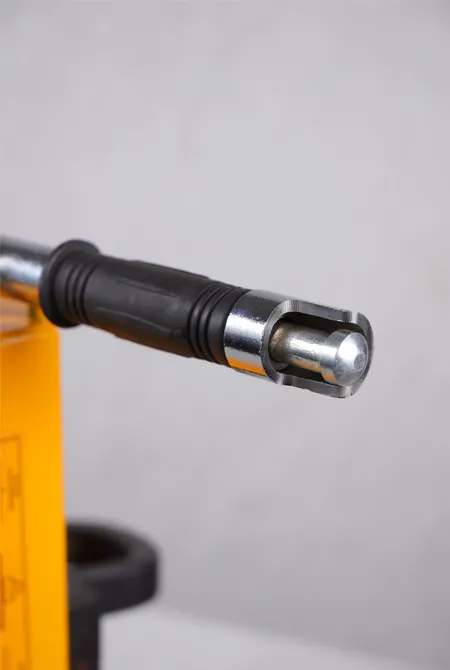bridge and gantry crane
Understanding Bridge and Gantry Cranes An Overview
Bridge and gantry cranes are essential pieces of equipment used in various industrial, construction, and shipping environments to facilitate the movement of materials and heavy loads. Their design and functionality enable them to operate in confined spaces and handle substantial weights, making them indispensable in enhancing productivity and efficiency in various sectors.
Design and Structure
Bridge cranes consist of a horizontal beam supported by two or more legs that travel along elevated tracks. The bridge traverses the workspace, allowing for the lifting and moving of loads across its span. This type of crane is typically found in warehouses, manufacturing plants, and shipping yards due to its ability to maximize floor space and avoid obstructions.
Gantry cranes, on the other hand, are similar in function but differ in design. They feature a frame supported by vertical legs that move on wheels or tracks at ground level. Designed to lift and lower loads, gantry cranes are often used outdoors for tasks such as loading and unloading shipping containers or managing materials at construction sites. Their portability is a significant advantage, allowing for easy relocation depending on the project’s needs.
Functionality and Applications
Both bridge and gantry cranes serve critical roles across a wide range of industries. In manufacturing facilities, these cranes are involved in assembly processes, transporting heavy components from one point to another. In the construction industry, gantry cranes provide the necessary support for moving materials like steel beams, concrete slabs, and other hefty elements required for building projects.
bridge and gantry crane

In port operations, bridge cranes are employed for container handling, loading cargo onto ships, and facilitating efficient logistics. Their ability to move loads of varying sizes and weights makes them invaluable in keeping the supply chain flowing.
Safety Features and Operational Efficiency
Safety is a paramount concern when operating bridge and gantry cranes. Modern cranes are equipped with numerous safety features, such as overload sensors, emergency stop buttons, and limit switches to prevent excessive travel or lifting beyond capacity. Regular maintenance and operator training are essential in ensuring these cranes function safely and efficiently. Operators must be well-versed in load handling techniques and aware of their surroundings to minimize risks associated with heavy lifting.
Operational efficiency is enhanced through the use of advanced technology. Many modern cranes incorporate digital controls and automation systems, allowing for precise movements and reducing the likelihood of human error. The integration of sensors and telematics can also provide valuable data, helping organizations improve their operations further by monitoring crane performance and scheduling maintenance proactively.
Conclusion
In conclusion, bridge and gantry cranes are vital in modern material handling, contributing significantly to productivity across various industries. Their unique designs offer solutions tailored to specific environments, whether in a factory, a construction site, or a shipping yard. With advancements in safety features and technology, these cranes continue to evolve, supporting the growing demands of the global economy. As industries move toward more automated and efficient workflows, the role of bridge and gantry cranes will undoubtedly remain crucial for years to come. Understanding their mechanics, applications, and safety protocols is essential for any organization looking to maintain a competitive edge in the fast-paced industrial landscape.
-
the-power-of-trolley-cargo-and-machinery-moving-solutionsNewsAug.22,2025
-
exploring-magnetic-lifting-devices-for-efficient-steel-plate-handlingNewsAug.22,2025
-
the-essential-guide-toportal-craneNewsAug.22,2025
-
enhancing-efficiency-in-permanent-magnetic-liftersNewsAug.22,2025
-
heavy-duty-machinery-movers-and-material-handling-solutionsNewsAug.22,2025
-
the-comprehensive-guide-to-adjustable-gantry-cranesNewsAug.22,2025
-
The Ultimate Guide to Heavy Machinery Moving EquipmentNewsAug.04,2025
